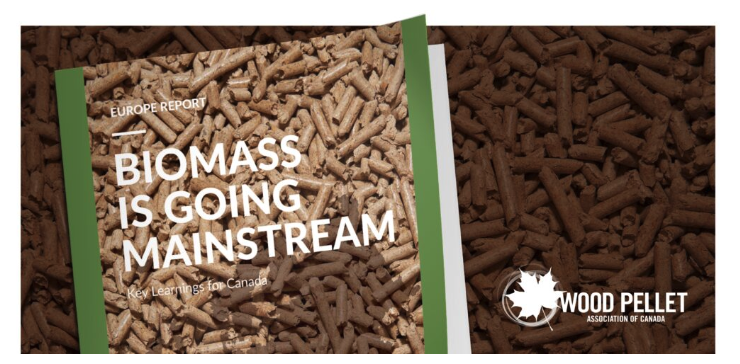Biomass is now mainstream in Europe and the focus has moved beyond the basics of pellets to how to grow its use and improve technology across the supply chain. As the second largest producer of wood pellets in the world, Canada has played an important role in this success. Now it’s time to look at the role of Canadian pellets closer to home.
I recently attended the annual World Sustainable Energy Days event in Wels, Austria. More than 650 participants from 60 countries attended the four-day conference from February 28 to March 3, 2023. The conference’s theme “Energy Transition = Energy Security” highlighted the critical role energy transition plays in securing a clean energy future and progressive policies, as well as technologies and markets that will be required to get society there.
The message was clear: biomass has clearly taken its rightful place in carbon friendly and efficient bioheat solutions at all levels. Today hundreds of formerly coal-fired power plants around the world have made the transition to biomass, powering cities with reliable energy. At the same time there has been impressive growth on the residential and commercial sides. Since 2014, residential demand for wood pellets in Europe has grown by 57 per cent and on the commercial side the demand has grown by a whopping 76 per cent.
I returned from the conference impressed by the efforts of our European colleagues and inspired to share key learnings with our members and partners across the biomass sector. Read our newest report, Biomass is Going Mainstream: Key Learnings for Canada.
Carrots, Sticks and Tambourines
Leading the charge of advancing bioheat is the region of Upper Austria, about one-sixth the size of New Brunswick. By using what is referred to as a “carrots, sticks and tambourines” approach, biomass now accounts for 42 per cent of space heating in Upper Austria and 18 per cent of energy used in manufacturing.
The use of fossil fuels for heating is banned in all new home construction and heating system replacements, a key driver behind the 72,000 modern automatic biomass and 360 biomass district heating plants now operating in the region. The results are clear: Austria has succeeded in making biomass a mainstream fuel and taken 30,000 homes off fossil fuels.
Other significant indicators of growth were seen in the demand for boiler sales which grew by 109 per cent. Di Padua puts it best: “2021 was an exceptional year for pellets, with increased production, consumption and sales of boilers and stoves.”
Important Lessons for Canada
These efforts have clearly paid off for Europe and should stand as important lessons for Canada from regulators, policy makers, equipment suppliers, and pellet producers.
Today, wood pellets sourced from responsible producers in well-regulated countries like Canada are unquestionably sustainable and a part of the solution. However, to meet this demand will require good public policy, incentives to support domestic needs, and responsible use of the forest resource.
I want to acknowledge the great work of our Maritime Working Group to advance our interests domestically and recognize the excellent work of the Arctic Energy Alliance, which has been a driving force behind the tremendous uptake of biomass in the north. Collectively we are making impressive strides, but we have more work to do. Our plan includes:
- Developing a thermal energy (heat) strategy that includes wood pellets;
- Providing consumer capital financial support/incentives to address costs associated with installing boilers or wood pellet stoves. This support would be based on GHG outcomes, not only electricity-based solutions;
- Accelerating bioheat public procurement as the Government of Prince Edward Island has done;
- Introducing renewable heat incentives like the highly successful program in the United Kingdom and Austria;
- Funding fuel switching feasibility studies for industry like those available from Efficiency NB for switching from fossil fuels to electricity;
- Funding district energy feasibility studies for municipalities; and
- Revising standards that restrict the required technology and equipment from entering Canada.
WPAC looks forward to continuing to work together with all levels of government and our partners to ensure biomass is a dominant and mainstream part of this equation not only in the European Union and other parts of the world where wood pellets are in demand, but right here at home in Canada. You can read our full report and debrief here and, as always, feel free to reach out to me directly if you want to discuss these ideas in more detail.
Gordon Murray is the executive director of the Wood Pellet Association of Canada.
This article was originally published by Canadian Biomass, a national media brand providing coverage of the emerging biomass, bioenergy and bio-products markets. See CanadianBiomassMagazine.ca for more information.

